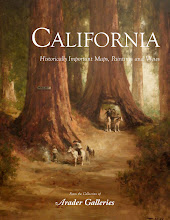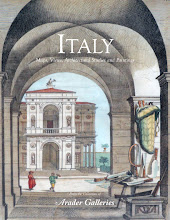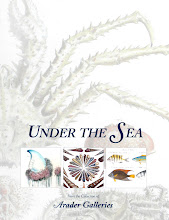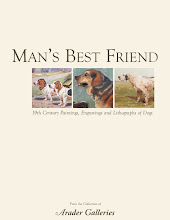





 A View at Lucknow
A View at LucknowArader Galleries was excited to participate in the San Francisco Fall Antiques Show benefiting Enterprise for High School Students held October 28 - 31 at the Fort Mason Festival Pavilion.
The theme for the 2010 show was Chinoiserie, an influential artistic and decorative style which reflects Chinese influences. The numerous lecturers spoke on an array of fascinating topics including an informative lecture on China and porcelain from Senior Vice President, Department Director, Chinese Works of Art and Head of European Ceramics and Chinese Export Porcelain at Sotheby’s, New York, Christina Prescott Walker. Using her own
Hey Royal Highness Princess Michael of
The 2010 San Francisco Fall Antiques Show was filled with lavish beauty, decoration and works from the finest galleries throughout the world and included an interesting and informative lecture series devoted to Chinoiserie.

Jacques Charton
Hippopotame d'Afrique
From Collection de plantes etrangeres en
fleurs, fruits, corail et coquillages
Hand-colored copperplate engravings
Arader Galleries in San Francisco is proud to be exhibiting at the upcoming 2010 San Francisco Fall Antiques Show, the oldest continually operating fine antiques show on the West coast, with exceptional dealers from across the world. Each year a special theme is selected highlighting a particular design influence. The 2010 San Francisco Fall Antiques show theme is “Chinoiserie”, a French term meaning “Chinese-esque”, and focuses on Western art that features or imitates the elements, techniques and designs that have been used in Eastern art for centuries.
With the influx of trade between Europe and China beginning in the 17th century, a new style of art, design and decoration was realized. Interests in whimsical Asian imagery and ornamentation, furniture, porcelain and design were abundant in European homes and in the art produced throughout the 17th to mid-18th century, when it further translated into the French Rococo style.
The San Francisco Fall Antiques Shows runs from October 28th to the 31st, 2010 at the Festival Pavilion in Fort Mason. Numerous guest speakers will be presenting throughout the show on a multitude of topics relating to Chinoiserie history, design and fashion. Please feel free to contact Arader Galleries in San Francisco for more details. Tickets to the San Francisco Fall Antiques show may be purchased at http://www.sffas.org.



Images:
View of Filoli house
View of Sunken Garden
Mural of Muckross House and Abbey
in Filoli ballroom
“Fight for a just cause; Love your fellow man; Live a good life”
Filoli is a magnificent estate located on the
The formal gardens at Filoli were designed by
In 1937, Filoli was sold to Mr. and Mrs. William P. Roth, owners of the Matson Navigation Company. Mrs. Roth, a horticultural enthusiast, brought worldwide recognition to the Filoli gardens and to Isabella Worn, whom assisted with plant selection and design. Worn’s detail in selection and plating design brought remarkable color and life to the gardens.
Mrs. Roth donated the estate to the National Trust for Historic Preservation in 1975 in order to ensure the estate would be available for all to enjoy years later. Filoli is open Tuesday through Sunday, mid-February to late October and is a true pleasure for architectural, design and garden enthusiasts alike.

Le Moyne, a French Huguenot, best known for his vivid account of the ill fated 1564 transatlantic voyage to
the
Image from the Victoria and Albert Museum
The Wild Strawberry watercolor at the
The Le Moyne Album at the
The Le Moyne Album at Arader Galleries is by far the most lavish and deluxe version when compared to the collections at the
If you would like more information, or the chance to view this magnificent 16th century manuscript by one of the most exceptional botanical artists of the 16th century, please do not hesitate to contact us.
Arader Galleries has, for the fourth year in a row, participated in the London Rare Books School (http://ies.sas.ac.uk/cmps/
Catherine DeLano-Smith, the editor of Imago Mundi, and Sarah Tyack, former chief Executive of the National Archives (UK), lead The History of Maps and Map Making and Mapping Land and Sea before 1900 seminars respectively. Highlights included a private tour and lecture of the British Library’s current exhibition Magnificent Maps: Power, Propaganda and Art with curator and director Peter Barber. (http://www.bl.uk/
Featuring over 80 of the most impressive wall maps ever created, this exhibit tells the cumulative story of how maps, and the underlying agendas of their creators and commissioners, have been used to wield power and control throughout history, from 200AD to the present day.
The exhibition beautifully exemplifies one of the main themes of modern cartographic study; that maps are subjective images that convey much more than geographic information. This rich world of nuanced yet complex purposes comes to light as one begins to see each map through the eyes of its originally intended audience.
The magnificent Maps exhibition at the British Library will be on display until September 19, 2010.

Discreetly located in downtown
The history gallery is based around the theme “Coming to
The art gallery at the
The photography collection includes Dorothea Lange’s documentation of the Great Depression across the
The

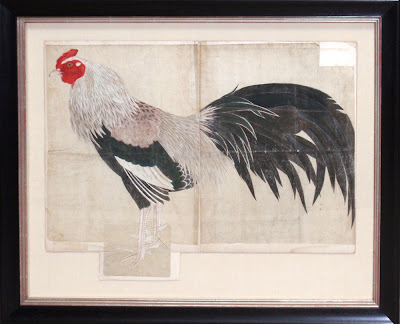
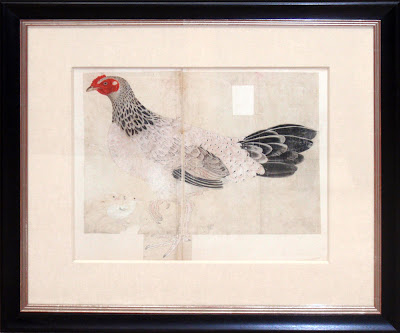
 French School
French School  Johann Christoph Volckamer (1644-1720)
Johann Christoph Volckamer (1644-1720)  François Duvillers (1807-1881)
François Duvillers (1807-1881) The Magpie
The Magpie
Arader Galleries had the privilege to visit the De Young Museum in

Within the vast halls and exhibitions of the Metropolitan Museum of Art in
King Louis XVI, who reigned from 1774 until 1792, when he was tried and executed for treason, was a young king growing up in
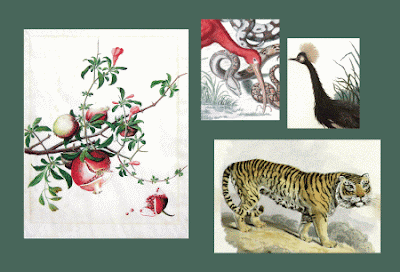 Arader Galleries is happy to announce that we will be participating in the Los Angeles Antiques show this year! Hope you will stop by to see our extraordinary collection of antique prints and original watercolors!
Arader Galleries is happy to announce that we will be participating in the Los Angeles Antiques show this year! Hope you will stop by to see our extraordinary collection of antique prints and original watercolors!
